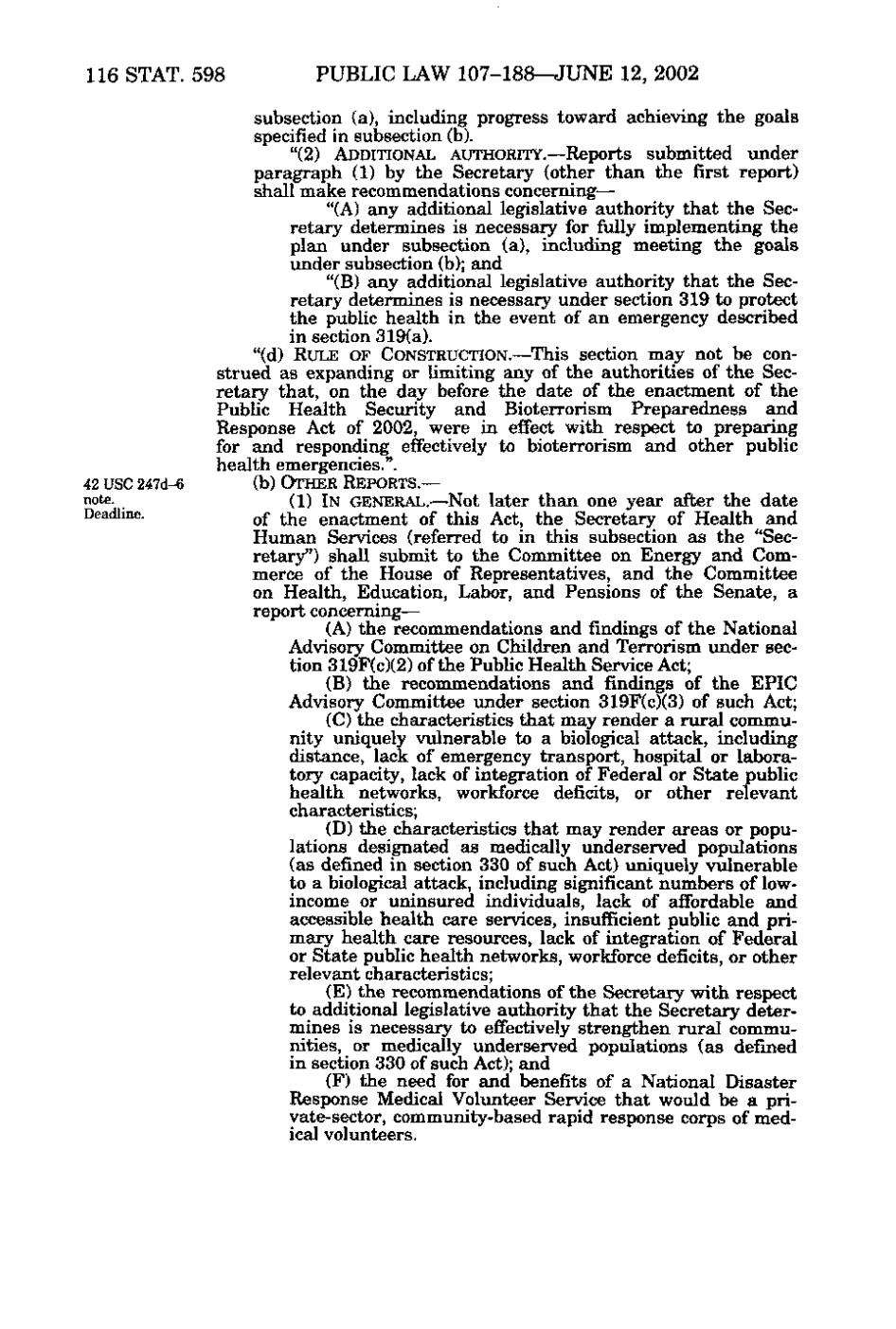116 STAT. 598 PUBLIC LAW 107-188-^JUNE 12, 2002 subsection (a), including progress toward achieving the goals specified in subsection (b). "(2) ADDITIONAL AUTHORITY.— Reports submitted under paragraph (1) by the Secretary (other than the first report) shall make recommendations concerning— "(A) amy additional legislative authority that the Secretary determines is necessary for fully implementing the plan under subsection (a), including meeting the goals under subsection (b); and "(B) any additional legislative authority that the Secretary determines is necessary under section 319 to protect the public health in the event of an emergency described in section 319(a). "(d) RULE OF CONSTRUCTION.— This section may not be construed as expanding or limiting any of the authorities of the Secretary that, on the day before the date of the enactment of the Public Health Security and Bioterrorism Preparedness and Response Act of 2002, were in effect with respect to preparing for and responding effectively to bioterrorism and other public health emergencies.". 42 USC 247d-6 (b) OTHER REPORTS.— note. (1) IN GENERAL.—Not later than one year after the date Deadline. ^f ^j^g enactment of this Act, the Secretary of Health and Human Services (referred to in this subsection as the "Secretary") shall submit to the Committee on Energy and Commerce of the House of Representatives, and the Committee on Health, Education, Labor, and Pensions of the Senate, a report concerning— (A) the recommendations and findings of the National Advisory Committee on Children and Terrorism under section 319F(c)(2) of the Public Health Service Act; (B) the recommendations and findings of the EPIC Advisory Committee under section 319F(c)(3) of such Act; (C) the characteristics that may render a rureJ community uniquely vulnerable to a biological attack, including distance, lack of emergency transport, hospital or laboratory capacity, lack of integration of Federal or State public health networks, workforce deficits, or other relevant characteristics; (D) the characteristics that may render areas or populations designated as medically underserved populations (as defined in section 330 of such Act) uniquely vulnerable to a biological attack, including significant numbers of lowincome or uninsured individuals, lack of affordable and accessible health care services, insufficient public and primary health care resources, lack of integration of Federal or State public health networks, workforce deficits, or other relevant characteristics; (E) the recommendations of the Secretary with respect to additional legislative authority that the Secretary determines is necessary to effectively strengthen rural communities, or medically underserved populations (as defined in section 330 of such Act); and (F) the need for and benefits of a National Disaster Response Medical Volunteer Service that would be a private-sector, community-based rapid response corps of medical volunteers.
�
